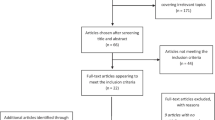Abstract
Considering quality of life (QOL) after stroke, car driving is one of the most important abilities for returning to the community. In this study, directed attention and sustained attention, which are thought to be crucial for driving, were examined. Identification of specific brain structure abnormalities associated with post-stroke cognitive dysfunction related to driving ability would help in determining fitness for car driving after stroke. Magnetic resonance imaging was performed in 57 post-stroke patients (51 men; mean age, 63 ± 11 years) who were assessed for attention deficit using a standardized test (the Clinical Assessment for Attention, CAT), which includes a Continuous Performance Test (CPT)-simple version (CPT-SRT), the Behavioral Inattention Test (BIT), and a driving simulator (handle task for dividing attention, and simple and selective reaction times for sustained attention). A statistical non-parametric map (SnPM) that displayed the association between lesion location and cognitive function for car driving was created. From the SnPM analysis, the overlay plots were localized to the right hemisphere during handling the hit task for bilateral sides (left hemisphere damage related to right-side neglect and right hemisphere damage related to left-side neglect) and during simple and selective reaction times (false recognition was related to damage of both hemispheres). A stepwise multiple linear regression analysis confirmed the importance of both hemispheres, especially the right hemisphere, for cognitive function and car driving ability. The present study demonstrated that the right hemisphere has a crucial role for maintaining directed attention and sustained attention, which maintain car driving ability, improving QOL for stroke survivors.


Similar content being viewed by others
References
Akinwuntan AE, Devos H, Feys H, Verheyden G, Baten G, Kiekens C et al (2007) Confirmation of the accuracy of a short battery to predict fitness-to-drive of stroke survivors without severe deficits. J Rehabil Med 39:698–702
Akinwuntan AE, Wachtel J, Rosen PN (2012) Driving simulation for evaluation and rehabilitation of driving after stroke. J Stroke Cerebrovasc Dis 21:478–486
Anstey KJ, Wood J, Lord S, Walker JG (2005) Cognitive, sensory and physical factors enabling driving safety in older adults. Clin Psychol Rev 25:45–65
Arwert HJ, Schults M, Meesters JJL, Wolterbeek R, Boiten J, Vliet Vlieland T (2017) Return to work 2–5 years after stroke: a cross sectional study in a hospital-based population. J Occup Rehabil 27:239–246
Benejam B, Sahuquillo J, Poca MA, Frascheri L, Solana E, Delgado P et al (2009) Quality of life and neurobehavioral changes in survivors of malignant middle cerebral artery infarction. J Neurol 256:1126–1233
Beschin N, Facchin A (2016) Examining visual field in clinical setting in neglect patients. Cortex 75:233–234
Bowers AR, Mandel AJ, Goldstein RB, Peli E (2010) Driving with hemianopia, II: lane position and steering in a driving simulator. Invest Ophthalmol Vis Sci 51:6605–6613
Chokron S, Peyrin C, Perez C (2019) Ipsilesional deficit of selective attention in left homonymous hemianopia and left unilateral spatial neglect. Neuropsychologia 128:305–314
Collia DV, Sharp J, Giesbrecht L (2003) The 2001 National Household Travel Survey: a look into the travel patterns of older Americans. J Saf Res 34:461–470
Corbetta M, Shulman GL (2011) Spatial neglect and attention networks. Annu Rev Neurosci 34:569–599
Fisk GD, Owsley C, Mennemeier M (2002) Vision, attention, and self-reported driving behaviors in community-dwelling stroke survivors. Arch Phys Med Rehabil 83:469–477
Haque MM, Washington S (2014) A parametric duration model of the reaction times of drivers distracted by mobile phone conversations. Accid Anal Prev 62:42–53
Hird MA, Vetivelu A, Saposnik G, Schweizer TA (2014) Cognitive, on-road, and simulator-based driving assessment after stroke. J Stroke Cerebrovasc Dis 23:2654–2670
Holmes AP, Blair RC, Watson JD, Ford I (1996) Nonparametric analysis of statistic images from functional mapping experiments. J Cereb Blood Flow Metab 16:7–22
Leibovitch FS, Black SE, Caldwell CB, McIntosh AR, Ehrlich LE, Szalai JP (1999) Brain SPECT imaging and left hemispatial neglect covaried using partial least squares: the Sunnybrook Stroke study. Hum Brain Mapp 7:244–253
Lundqvist A, Alinder J, Alm H, Gerdle B, Levander S, Rönnberg J (1997) Neuropsychological aspects of driving after brain lesion: simulator study and on-road driving. Appl Neuropsychol 4:220–230
Murakami T, Hama S, Yamashita H, Onoda K, Hibino S, Sato H et al (2014) Neuroanatomic pathway associated with attentional deficits after stroke. Brain Res 1544:25–32
Nichols TE, Holmes AP (2002) Nonparametric permutation tests for functional neuroimaging: a primer with examples. Hum Brain Mapp 15:1–25
Rabadi MH, Akinwuntan A, Gorelick P (2010) The safety of driving a commercial motor vehicle after a stroke. Stroke 41:2991–2996
Riccio CA, Reynolds CR, Lowe P, Moore JJ (2002) The continuous performance test: a window on the neural substrates for attention? Arch Clin Neuropsychol 17:235–272
Shatzman S, Mahajan S, Sundararajan S (2016) Often overlooked but critical: poststroke cognitive impairment in right hemispheric ischemic stroke. Stroke 47:221–223
Sozzi M, Bianchi Marzoli S, Melzi L, Corbo M, Venturella I, Balconi M (2017) Which differences in priming effect between neglect and hemianopia? A case description of a bilateral brain-lesioned patient. Neuroophthalmology 41:259–267
Acknowledgments
The authors would like to thank the MRI Team at Hibino Hospital for the special efforts.
Author information
Authors and Affiliations
Corresponding author
Ethics declarations
Conflict of interest
The authors declare that they have no conflict of interest.
Ethical approval
All procedures performed in studies involving human participants were in accordance with the ethical standards of the institutional review boards and the 1964 Helsinki declaration and its later amendments or comparable ethical standards.
Informed consent
Written, informed consent was obtained from all individual participants included in the study.
Additional information
Publisher’s note
Springer Nature remains neutral with regard to jurisdictional claims in published maps and institutional affiliations.
Electronic supplementary material
ESM 1
(XLSX 14 kb)
Rights and permissions
About this article
Cite this article
Shimonaga, K., Hama, S., Tsuji, T. et al. The right hemisphere is important for driving-related cognitive function after stroke. Neurosurg Rev 44, 977–985 (2021). https://doi.org/10.1007/s10143-020-01272-9
Received:
Revised:
Accepted:
Published:
Issue Date:
DOI: https://doi.org/10.1007/s10143-020-01272-9




